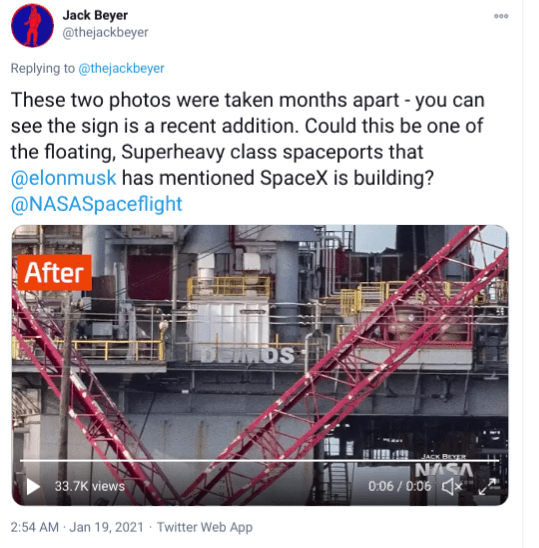The two former oil rigs (renamed Phobos and Deimos like the Martian moons) will now be used as launchpads for the SpaceX Starship rocket, which is designed to carry both crew and cargo to Earth orbit, the Moon, Mars and beyond.

Valaris plc has had a pretty lousy 2020. Like all oil companies, it suffered as the price of oil declined sharply, but Valaris seemed to take it worse than others, filing for bankruptcy in July. Turns out, before doing that, it sold two oil rigs for $3.5 million each to SpaceX.
SpaceX has long eyed launch and landing sites for its Starship launch system, and a water-based seaport would fit the bill excellently, especially since the ship will have a large blast area and would create a lot of noise (a common problem for populated areas). The two rigs in the Port of Brownsville, near SpaceX’s Starship development facility in Boca Chica, Texas, will not pose that problem.
Although the oil rigs were sold half a year ago, SpaceX didn’t openly announce it. NASA Space Flight magazine pieced things together, noticing that at the time the rigs were sold, SpaceX started advertising positions around Brownsville, including crane operators, electricians, and offshore operations engineers. In particular, one job advert called for applicants who can “install enhancements and major upgrades to offshore vessel electrical systems.” At the same time, founder Elon Musk confirmed that SpaceX was “building floating, superheavy-class spaceports for Mars, moon & hypersonic travel around Earth”. Now, the mystery has been lifted: the project involves SpaceX and its massive Starship, meant to send people to Mars and (maybe) back.
So far, the Starship prototype launched to about 40,000 feet (12,000 meters), but despite passing some of the checkpoints, it exploded when it reached the ground. It’s pretty much still a work in progress, although Musk has great hopes for it.
SpaceX plans to eventually send not one, but multiple Starships to Mars during a single launch window (the period when the orbit of Earth will help put the rocket on a trajectory to Mars — just a few weeks every 26 months). There’s still a lot of work to be done, but if everything goes smoothly, Phobos and Deimos can enter service in late 2021. Until then, the Starship launch system is already expected to become operational, for orbital flights.
“SpaceX is building floating, superheavy-class spaceports for Mars, moon & hypersonic travel around Earth,” Musk had previously tweeted in June 16, 2020
Based on the extensive work still needed to prepare the rigs, Phobos and Deimos will likely enter service after the initial orbital flights of the Starship launch system. The first orbital Starship launch from Boca Chica could occur in late 2021, pending successful Starship and Super Heavy testing throughout the year.
SpaceX also plans to eventually send multiple Starships to Mars during a single interplanetary transfer window. These flights will be in addition to perhaps hundreds of Starship missions to Earth orbit before carrying any people.


